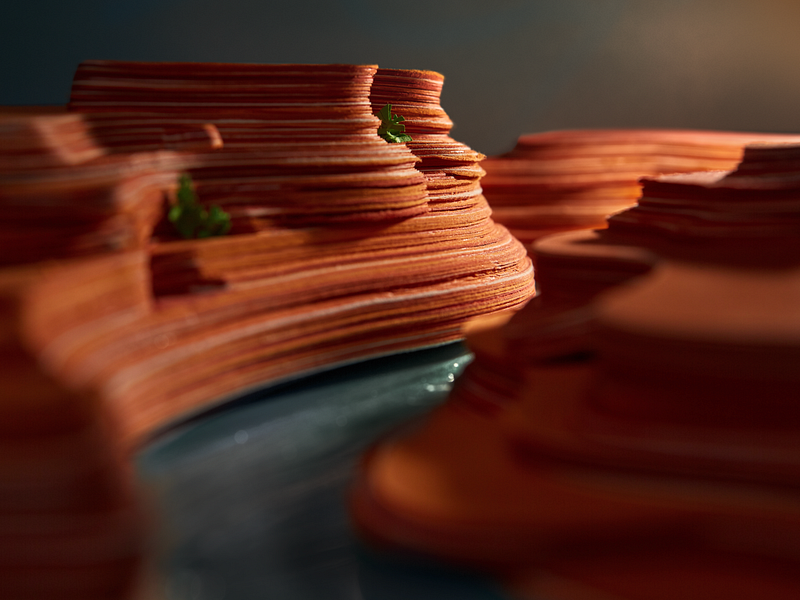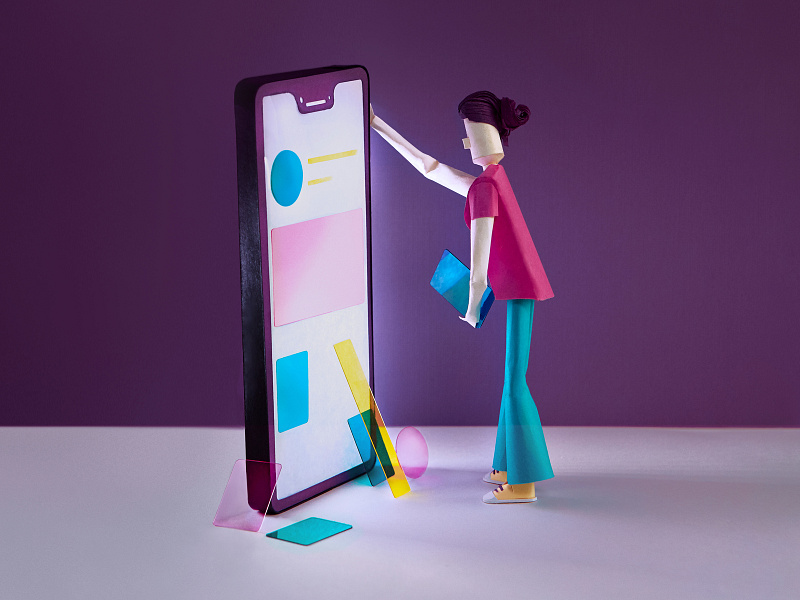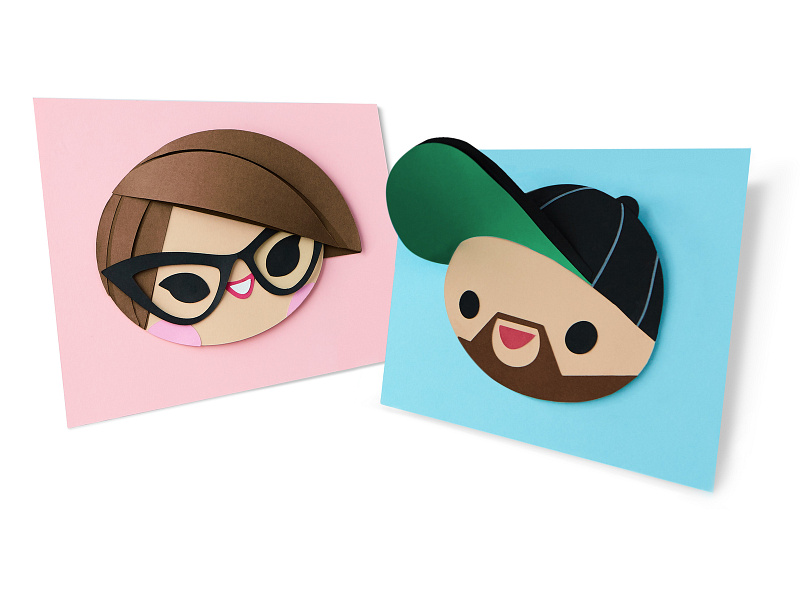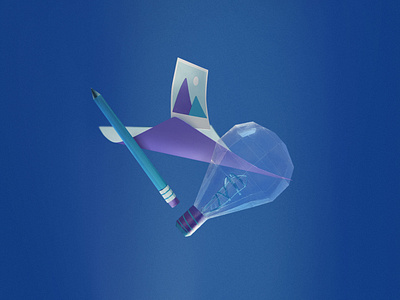How does paper illustration work and how can it be implemented into digital design projects? Hear it straight from an expert paper illustrator and photographer, Alicja Colon, as she shares a basic overview of her favorite craft.
Heya! I’m Alicja Colon, a paper illustrator and photographer at Thrice Studio. My love for paper was discovered through personal projects—which I’m sure you all know how important those are, but that’s not what this post is about. We’re going to tackle the mind-bending question, “How does paper illustration work and what kind of digital design projects does it thrive in?”.
At a basic level, paper illustration is exactly what it sounds like: illustration with paper. While many skilled illustrators draw with bezier curves, pen or pencil, I do so with paper. Believe it or not, there’s actually a healthy number of us paper illustrators out there, though there’s only a handful who are also professional studio photographers, like me. With the variety of paper illustrators come different styles. My preferred style is sculptural, which we’ll be focusing on today.
Sculptural paper illustration and light are best friends forever. Since sculptures have height, width, and depth, light moves and bends around them. Extra meaning is easily added by modifying the studio lights. Change the direction of the flash, add a gel, or sprinkle some fog or powder, and a different image has emerged. This is best exemplified in Epicurrence’s Breckenridge images:

The foundational elements of paper illustration
Now, let’s take a few steps back to the more foundational characteristics of paper illustration before jumping into the many ways it can be implemented into digital designs. Paper illustration is:
Tactile
First and foremost, paper illustrations are crafted by hand. While often people swear that my work is 3D, I have to disappoint them. Admittedly 3D would probably be faster, but there’s a very unique feeling tactile illustrations are able to achieve. Those slight imperfections communicate a warmth which 3D has a hard time achieving. Moreover, once the props are made, I’m able to quickly iterate on their position and camera angle during the shoot.
Because I have the tangible objects to play with, previously unimagined compositions come to life. The final product, more often than you’d suspect, is an ad-hoc image and not the one approved in the sketches. Click on the Shot to check out a process time-lapse.
Flexible
Another surprise is how flexible paper illustrations can be. That doesn’t mean coming into my studio and bending all of my paper sculptures—not the flexibility I’m referring to!
Stylistically speaking, paper illustrations can land anywhere on a sliding scale between playful and sophisticated. Factors that determine that landing are subject, color palette, and lighting. My favorite paper illustrations lean toward joyful with a foundation of communication strategy. Just like other illustrations, I have to pay attention to what and how the message is being communicated. Those items give me the guardrails and direction when I’m creating. Without them, I’m quite lost.
Flat yet dimensional
Single-colored paper gives every paper project a feeling of flatness—but because of light, it also has dimension. This flat yet deep paradox is a push-and-pull dance that I find so beautiful. It’s evident in all paper illustrations, but it’s accentuated with skilled lighting. Also accentuated is the paper’s texture. Smooth, linen, kraft, all have different grains and each add a layer of meaning to the image’s narrative. However, regardless of the paper substrate, it’s a smooth plane with a flat color that has an ability to hold a form.
Oh, the places paper can go!
As I step into my office each morning, I’m greeted with piles on piles of colored paper. The potential and flexibility in each sheet is exciting and the opportunities are limitless. Likewise, where a paper illustration can live is also bountiful—even in the digital space.
WEBSITE ILLUSTRATIONS
Hero imagery and spot illustrations are prime benefactors from paper illustrations. The beginning of this process looks at both your brand and content strategy. What and how are we going to visually communicate your message? Then, with ratios and copy space in mind, I sketch concepts which are iterated on until approval. Then it’s onto production, photography, and retouching.
VIDEO PROPS
It’s always fun (and way more time consuming) making paper props for video. The level of perfection and completion is on a whole other level. Most times in photoshoots, I can get away with not creating a side or two with mishaps that are unavoidable in any hand-crafted element (thank you, Photoshop!). But with video, that’s not the case. The prop has to be as perfect as I can get it and also sturdy. It’s challenging, but I love it. Click on the Shot for the full video.
MARKETING CAMPAIGNS
Products and companies can take on new life and even dimensions when paired with paper. Because paper props are different than the norm, they have an instant engagement level. However, add stop motion or other slight animations and—BOOM! Audiences faint at the awesomeness. Okay, not really, but they are very engaged in what you’re communicating.
EDITORIAL ILLUSTRATIONS
Paper editorial illustrations are different in that message trumps all, and the brand is pushed to the side to a certain extent. With editorial work, the tone of the article drives the tone of the illustrations…not the magazine or company as a whole. Also, I love how I get to expand the narrative by illustrating different points of the article.
To sum it all up, paper illustration is an imaginative use of paper to communicate a message. Paper illustration has depth, mood, tone, style, and craft. Its hand-made and imperfect nature add a whole other level of engagement to a project, especially in the digital space. It’s my favorite thing to spend time on and I’m thankful you’ve spent some time to learn about it.
Want to keep up with Alicja? Find her on Dribbble, Instagram, and at Thricestudio.com.
Find more Community stories on our blog Courtside. Have a suggestion? Contact stories@dribbble.com.



















